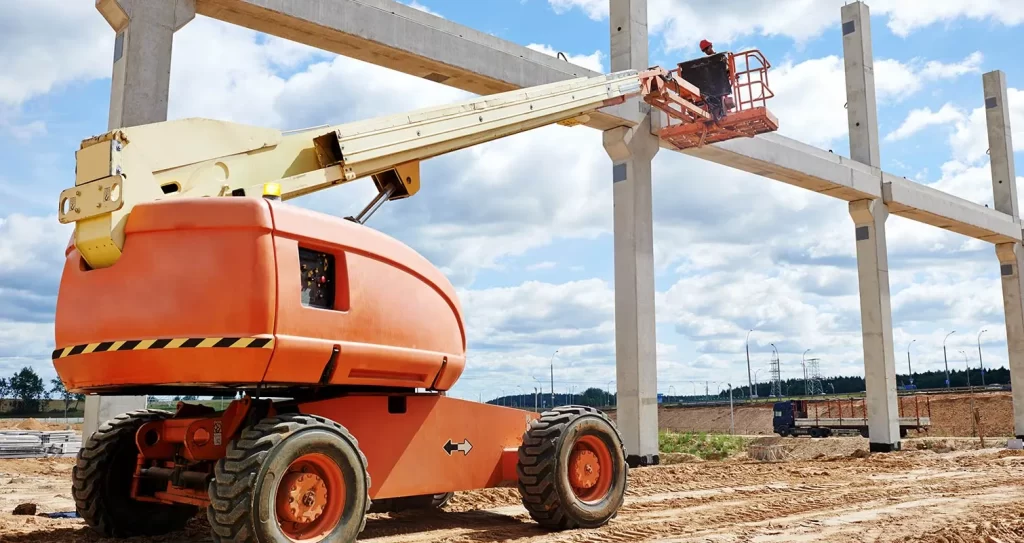Ensuring a safe work environment is essential, especially when working with heavy equipment like boom lifts. Boom lifts are invaluable for reaching high places, making them essential tools in construction, maintenance, and many other industries. However, their use comes with inherent risks. This blog will guide you through creating a safe work environment when using boom lifts, focusing on best practices, safety tips, and essential information to keep your team secure and productive.
NOTE: For top-quality boom lifts and comprehensive safety training, contact your trusted supplier today to ensure your worksite is equipped with the best equipment and knowledge for safe and efficient operations.
Understanding Boom Lifts
What Are Boom Lifts?
Boom lifts are aerial work platforms that extend vertically and horizontally to provide access to high areas. They are commonly used in construction, maintenance, painting, and other industries where working at height is necessary. There are two main types of boom lifts:
- Articulating Boom Lifts: These have multiple sections that can bend, allowing the platform to maneuver around obstacles.
- Telescopic Boom Lifts: These have a straight arm that extends outward, providing a greater reach.

Why Are Boom Lifts Important?
Boom lifts are crucial for tasks that require working at heights. They offer a stable and secure platform, enabling workers to perform their duties efficiently and safely. However, to maximize their benefits, it’s essential to use them correctly and adhere to safety guidelines.
Ensuring Safety with Boom Lifts
Training and Certification
One of the most critical steps in creating a safe work environment with boom lifts is ensuring that all operators are properly trained and certified. Training should cover:
- Operational Knowledge: Understanding how to operate the lift safely.
- Safety Procedures: Learning the proper safety protocols and emergency procedures.
- Maintenance Checks: Knowing how to perform routine maintenance checks.
Conducting Pre-Use Inspections
Before using a boom lift, it’s essential to conduct a thorough inspection. This includes checking:
- Hydraulic Systems: Ensure there are no leaks and that the system is functioning correctly.
- Mechanical Components: Check for any signs of wear and tear or damage.
- Safety Features: Ensure that all safety features, such as emergency stop buttons and guardrails, are in place and operational.
- Platform and Controls: Test the controls and ensure the platform is stable.
Following Manufacturer Guidelines
Always adhere to the manufacturer’s guidelines for operating and maintaining boom lifts. These guidelines are designed to ensure the safe and efficient use of the equipment. Key points include:
- Weight Limits: Never exceed the maximum load capacity of the lift.
- Operating Conditions: Only use the lift in suitable weather and environmental conditions.
- Maintenance Schedule: Follow the recommended maintenance schedule to keep the lift in optimal condition.
Implementing Safety Protocols
Establishing Clear Communication
Effective communication is crucial when operating boom lifts. Ensure that all team members are aware of their roles and responsibilities. Use hand signals, radios, or other communication devices to maintain clear and constant communication, especially when working in noisy environments or at heights.
Setting Up Safe Work Zones
Define and mark safe work zones around the boom lift operation area. This includes:
- Barrier Placement: Use barriers or cones to keep unauthorized personnel away from the lift.
- Signage: Post clear signs indicating the presence of overhead work and restricted access areas.
- Ground Conditions: Ensure the ground is stable and level to prevent tipping or instability.
Using Personal Protective Equipment (PPE)
All workers should wear appropriate PPE when operating or working near boom lifts. This includes:
- Hard Hats: To protect against falling objects.
- Safety Harnesses: To prevent falls from the platform.
- High-Visibility Clothing: To ensure workers are easily seen.
- Protective Footwear: To provide stability and protect against injuries.
Best Practices for Safe Boom Lift Operation
Monitoring Weather Conditions
Weather conditions can significantly impact the safe operation of boom lifts. Always check the weather forecast and avoid using boom lifts in adverse conditions such as high winds, rain, or snow. If weather conditions change unexpectedly, stop work immediately and lower the lift to a safe position.
Avoiding Electrical Hazards
Boom lifts often operate near electrical lines, which can pose severe hazards. To avoid electrical hazards:
- Maintain Safe Distances: Ensure the boom lift is kept at a safe distance from power lines.
- Use Insulated Lifts: When working near electrical lines, use insulated boom lifts designed for such environments.
- Follow Local Regulations: Adhere to local regulations and guidelines for working near electrical hazards.
Performing Routine Maintenance
Regular maintenance is crucial for ensuring the safe operation of boom lifts. Develop a maintenance schedule that includes:
- Daily Inspections: Conduct daily checks before each use.
- Scheduled Servicing: Follow the manufacturer’s recommended servicing intervals.
- Record Keeping: Maintain detailed records of all inspections, maintenance, and repairs.
Emergency Preparedness
Developing an Emergency Plan
An effective emergency plan is essential for any worksite using boom lifts. This plan should include:
- Emergency Procedures: Clear instructions on what to do in case of an emergency, such as a malfunction or accident.
- Contact Information: A list of emergency contacts, including medical services and equipment suppliers.
- Training: Regular training sessions for all workers on emergency procedures and first aid.
Conducting Drills
Regular emergency drills help ensure that all workers are familiar with the emergency procedures. Conduct drills periodically to keep everyone prepared and to identify any areas for improvement in the emergency plan.
Conclusion
Creating a safe work environment with boom lifts involves proper training, regular inspections, adherence to manufacturer guidelines, and the implementation of safety protocols. By following these best practices, you can ensure the safety of your team and the efficient operation of your boom lifts. Remember, safety should always be the top priority when working at heights.
For more insightful articles related to this topic, feel free to visit technotreats